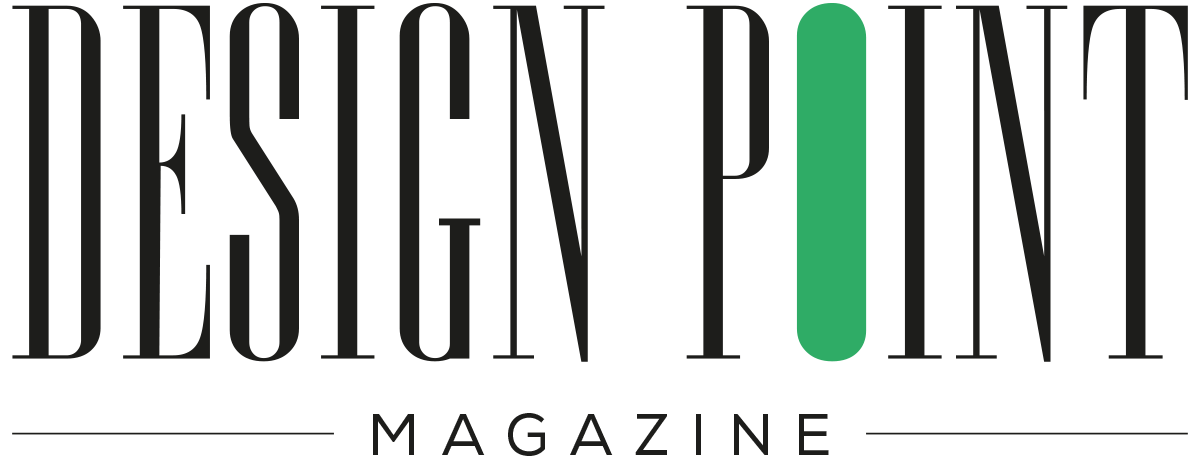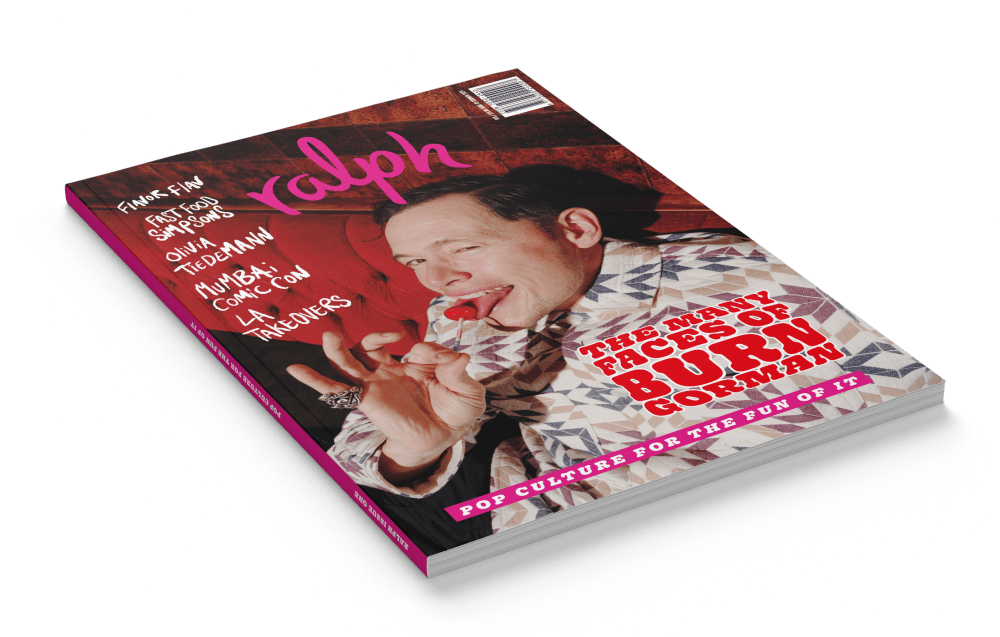With offices in New York City, Los Angeles and Tokyo, Ralph is a creative creative/social media agency responsible for some of the entertainment industry’s most viral moments for hit shows including “Severance,” “Squid Games,” “Breaking Bad,” “Stranger Things,” “The Bear,” “Black Mirror” and others.
The name “Ralph” comes from “The Simpsons” character Ralph Wiggum. The agency’s goal is to make stuff that people love and share—“pop culture for the fun of it,” they call it—and they have now decided to launch a fun project of their own: a glossy quarterly called Ralph magazine. Publisher and founder/CEO Chris Hassell spoke with me about the value of creating a magazine in the social media age as a chance to work with creatives outside of the typical agency client/brief dynamic.
Soon to launch its fourth issue, Ralph can be found on newsstands in New York City, Los Angeles, Mumbai and Tokyo, and throughout the U.K. Copies also available online.
Why did you choose to go analog, and on such voluptuous paper stock?
Ralph has been around for 20 years now, so we wanted to develop something that brought back that feeling of permanence. Digital is amazing but it’s infinite (we think), whereas physical production has a limit. Every issue I see 128 pages waiting to be filled and it’s a joy to see it come together with everyone we work with. It can also be more rewarding creatively to see your work in print—there’s still something magical about it.
… As we create lots of stuff with very creative and fun people across audio, video, events, comedy and food, the physicality of having a print magazine adds trust and tangibility to what we’re doing. It’s our retro first step and makes a statement about our approach.
Ralph creates a lot of social content, but we also wanted to push our “attention not addiction” belief: The world is being dragged down the gutter creatively by following the algorithms, and digital content often gets overwhelmed by negative sentiment and virtual battling between people. We were keen to slow down a bit and allow people to discover new things, and in the process perhaps be a bit more understanding of other humans and what brings them joy.
I was worried about the stock not smelling right, as I’m an obsessive print sniffer, and gloss stock doesn’t do it for me as much as matte. However, we wanted the colors to be punchy and photos to shine, and you only get that with gloss; overall we wanted it to have high energy, like old school pop magazines of the ’90s—something people feel they can roll up and put in their pocket.
We’d rather it get read and ripped than sat looking pristine on a coffee table. Personally, I read it whilst also keeping it pristine, and the smell is pretty good, too.
This magazine is for the U.K.’s hippest. You write in the editorial of the third volume, “This issue of Ralph is bananas—exactly how we want it to be.” What do you define as “bananas”?
I wouldn’t say we’re going for the hippest, across any area of the world. And we hope to have more contributions from our offices in Mumbai and Tokyo, as well as the U.K. and U.S. We want to be far more inclusive, and created the strapline “Pop Culture for the Fun of It” to promote this. We bring content and people together through joy. This is one of our key editorial guidelines.
We see “bananas” as a collection of seemingly random things brought together that raise smiles and bring joy through acquiring fun, positive knowledge from across the spectrum of human interests.
Our editor, Josh Jones, has been producing magazines and books for 20 years now, so he’s so amazingly connected to many interesting and talented people. It’s thrilling to dig into who we can bring in, what we can write about, illustrate, animate, shoot, record, and it’s just a pleasure to be making stuff people love and share.
You have a comedy editor, Alexandra Haddow. There are precedents for humor editors in magazines—what specifically is she tasked with bringing to the publication?
Alex is a legend and already we’d be lost without her. She’s a fantastic comedian and allows us to have someone trusted by other comedians to interview them and approach them with other creative projects we have in mind. Much more to come from Ralph and Alex in terms of comedy content. Watch this space.
What would you say differentiates Ralph from prior alternative punk, new wave and other once-contemporary aesthetics?
We want to be pretty mainstream and inclusive, so I’d say we’re more childlike than alternative aesthetics such as punk and new wave. Still keeping some elements of energy and joyful anarchy in there by not being too regimented in our layout. We’re still finding our feet, but having an artist like James-Lee Duffy as our art director means we’re always being pushed ever so slightly out of our comfort zone.
How do you rate the success of each issue? Number of readers? Angry responses? High praise from readers?
We haven’t set out to create a commercial print magazine business, so our success is very much looking for high praise, and an understanding of what we stand for as a brand. We love people getting in touch with ideas they want to bring to life with us (that’s a key driver for why we’re doing this).
We’re definitely not after angry responses, although some clients seem upset we’re sending them printed copies of the magazine for free—maybe they just don’t like the smell.
What is the ultimate goal of Ralph?
The goal of the magazine is to bring people together, raising spirits, smiles and awareness that life is only worth living if we celebrate the fun side. We exist to celebrate, curate and create content and experiences that back this up. We want to be making stuff across all mediums, as we have with partners for 20 years, but now it’s time for a brand that exists just for creative-powered fun to rise. The magazine is just the beginning!
The post The Daily Heller: The Alternative Mag ‘Ralph’ Brings Gloss to Print appeared first on PRINT Magazine.

